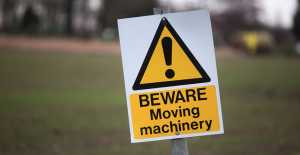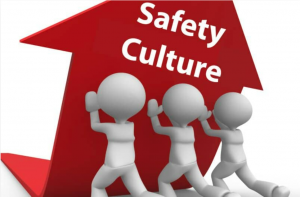Navigating the requirements for the safety of your family & employees on the farm can be daunting and time consuming. How do we create a culture of safety and put processes in place to ensure the ongoing protection of all team members?
Who is responsible?
|
Ultimately the farm owner/s and/or managers are responsible for adopting and implementing farm safety practices. Creating a safe work environment will help avoid serious injury or fatalities, it can also improve productivity on farm and increase employee satisfaction. |
 |
What are the challenges?
There are many challenges faced by managers that present obstacles to creating a safety culture on farm – it can all seem too hard!
- Multiple worksites – various locations that pose different kinds of risks make putting processes in place more difficult eg. a paddock with overhead powerlines, another with potholes
- Seasonal or inexperienced workers – sometimes workers have limited skills and weeks of training isn’t always an option during harvest!
- Supervision – managers are not able to supervise multiple work areas
- Shortage of materials – sometimes the correct tools/equipment are not on hand to solve a problem and the ‘just get it done’ attitude and using what is on hand, is the only option
Where do I get help?
 |
Navigating your farm safety requirements and putting procedures in place can feel like a time consuming and sometimes daunting prospect!
|
Creating a system that works for you, that can be easily implemented, updated and maintained, is key. You need to identify the critical risks, document them and put safe practices in place. New staff & contractors will need safety training during the induction process, some will also need on the job training in safe operation of equipment and safe work practices around the farm.
Help is available via the Australian Government Business website with clear steps on:
- Identifying hazards in your workplace – finding anything that can cause harm
- Assessing the risks – how dangerous is the risk and how to control it
- Controlling the risks – eliminating risks and finding alternative methods
- Reviewing the controls – scheduling regular inspections to avoid incidents
- Recording & reporting safety issues – keeping records and compliance
There are links on this page to assist with creating Policies, Procedures & Processes and developing a risk management plan for your business.
If technology is your preference, there are Australian digital options, specific to the agriculture industry – these tools are laptop, smart phone & tablet friendly, can be updated in real time and can digitize and centralise your compliance requirements. Protocols and tasks can be developed as needed, there are equipment maintenance records, and an HR tool and the system manages the storage and retention of safety documents and compliance activities. An example of this technology is Safe Ag Systems.
How do you create safety culture?
The most effective tools for creating a culture of safety on your farm are leadership and communication.
Strong and consistent leadership when implementing safety practices will influence attitudes & behavior of other team members. When an employee witnesses their manager or employer putting safety processes in place and adhering to these processes consistently, it makes them feel cared about and reinforces the importance of a safe work environment for everyone.
Encourage your staff to talk to you about safety and report anything they see that might cause injury. When they are included in the process, their attitude and mindset are more engaged with the safety culture which benefits the entire team.
|
Creating & maintaining a positive culture of safety on your farm comes from the top – with strong leadership and procedures in place, you will mentor your employees and lead by example. Your team will respond well when they feel cared about and listened to. |
 |
Bev Wood, Communications Consultant
For more information contact us here admin@orm.com.au